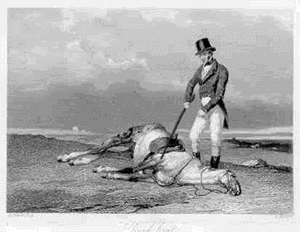My first batch, "Muntons Connoisseurs Bock Beer Kit". mixed it up on Saturday evening around 7pm and used about .25 lbs of sugar and 3lbs DME, pitched the yeast at about 69/70*. forgot to check the gravity.
checked it Sunday morning and it was bubbling away quite readily, about 2 or 3 'glugs' per second. I then realized the area where I stored the pail was a bit warm (about 75-80*) so I moved it to a cooler place. checked it later sunday evening and it was still glugging away happily.
I check it today around 3pm and the airlock it completely dead. no activity to be seen whatsover.
did I break it?

Oh by the way, you can't "break" your beer. everything is fine. This is where you guys who instantly equate a bubbling airlock with "FERMENTATION" seem to miss...An airlock is simply a valve, a vent to release excess co2, to keep your lid on your fermenter and your beer off the ceiling.
It's always going to slow down eventually. The yeast are going to have less fermentables to consume, than they did in the first few days, so they are not going to produce that much EXTRA co2, and therefore the airlock is not going to NEED to blip as fast, if at all.
But that DOESN'T mean the yeast has stopped doing their job....they just don't have that much food to chew....but they're not going to stop, they just don't go to sleep unless the temp dips down to the low 50's, and they just don't die....they MAY eat all the consumables they can in the case of a high grav wort and shut down, like in a barlewine.
But in your NORMAL beer, they are just going to keep working. They are going to slowly slug away until the job is done. Just not as dynamically as they do when they are having the gluttonous orgy of sex and food....it's just like us on thanksgiving....we start slowing down eventually...but we more than likely keep eating. At least until we get to the pumpkin pie...or the midnight snack......
Besides, fermenting the beer is just a part of what the yeast do. If you leave the beer alone, they will go back and clean up the byproducts of fermentation that often lead to off flavors. That's why many brewers skip secondary and leave our beers alone in primary for a month. It leaves plenty of time for the yeast to ferment, clean up after themselves and then fall out, leveing our beers crystal clear, with a tight yeast cake.
Your HYDROMETER is the only BEST indicator of fermentation activity. Nothing else is accurate or consistent...
Unless you take a gravity reading you don't know what's really going on, not by airlock bubbling or by krausen formation. Neither of those signs are effective, they don't tell you exactly where on the fermentation process you are.
The amount of krausen can vary for whatever reason, it can come quick and depart quickly or it can linger long after fermentation is complete, and it all be normal.
And airlocks sometimes bubble or they don't. And airlock is a valve, a vent to release excess co2...NOT a fermentation gauge. It's important to make that distinction, or you'll be panicking everytime a an airlock doesn't bubble, or stops bubbling.
Fermentation is not always "dynamic," just because you don't SEE anything happening, doesn't mean that any-thing's wrong,, and also doesn't mean that the yeast are still not working diligently away, doing what they've been doing for over 4,000 years.
That's why you need to take a gravity reading to know how your fermentation is going, NOT go by airlocks, or size of krausen, or a calendar, the horoscope or the phases of the moon (those things in my mind are equally accurate).

The most important tool you can use is a hydrometer. It's the only way you will truly know when your beer is ready...airlock bubbles and other things are faulty.
The only way to truly know what is going on in your fermenter is with
your hydrometer. Like I said here in my blog, which I encourage you to read,
Think evaluation before action you sure as HELL wouldn't want a doctor to start cutting on you unless he used the proper diagnostic instuments like x-rays first, right? You wouldn't want him to just take a look in your eyes briefly and say "I'm cutting into your chest first thing in the morning." You would want them to use the right
diagnostic tools before the slice and dice, right? You'd cry malpractice, I would hope, if they didn't say they were sending you for an MRI and other things before going in....
Thinking about "doing anything" like repitching, or bottling, or racking, without first taking a hydrometer reading is tantamount to the doctor deciding to cut you open without running any diagnostic tests....Taking one look at you and saying, "Yeah I'm going in." You would really want the doctor to use all means to properly diagnose what's going on?








